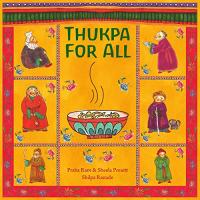
Readers will be transported to the rugged Himalayas with this story of a deaf Sherpa boy in Nepal, who braves a storm in search of his family’s yaks. He finds the animals herded around a young calf whose leg is wedged between rocks. Unable to rescue the animal alone, Kami whistles for help. When no one comes, he slips and slides down the icy mountain to get his father and brother. He relates the problem through mime. Together the family rescues the calf, and the plucky hero proudly leads the way home.
Kami and the Yaks

It’s Deepawali, the Festival of Lights in Nepal, and today is the day to honor dogs! Brothers Alu and Bhalu wander the streets of Kathmandu, passing by twirling kites and bamboo swings, looking for a dog to feed. But as night falls, their task begins to feel hopeless, until they spot a small black dog who is in need of a friend. This gentle story told in verse presents an important Hindu holiday (also called Diwali in India) through the eyes of two young boys.
A Dog Named Haku: A Holiday Story from Nepal

Tenzing Norgay and Edmund Hillary each tell their story, culminating in their thrilling ascent of Mount Everest. Norgay grew up in Nepal, herding yaks in the shadow of Chomolungma, the mountain also known as Everest. He has always dreamed of climbing to the top. He becomes a guide, leading treks through the Himalayas. Across the ocean, in New Zealand, Hillary grew up tending his father’s bees. He climbed his first mountain at sixteen and has climbed all over the world ever since. In 1953, the two men set out on the same expedition to climb Everest. They tramp over windswept glaciers, crawl across rope bridges, hack footholds in the ice … until finally they reach the top of the world!
Two at the Top: A Shared Dream of Everest

When the gong rings at the gompa, Tsering takes off for home knowing that hot, hearty, spicy thukpa awaits him. He invites others as he meets along the mountainous path. When the power goes out, Abi worries she won’t be able to see to complete the thukpa. But Tsering is accustomed to the dark as he’s blind. Alliterative, onomatopoeic language complements the childlike illustrations. Information about thukpa and a recipe are included.
